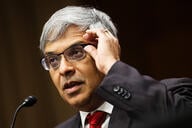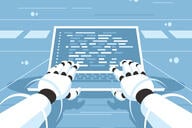You have /5 articles left.
Sign up for a free account or log in.
Two decades ago, the president of the American Association for the Advancement of Sciences, Jane Lubchenco, called for a new social contract for science. She pointed out that, given the current state of the human-environment system, it is no longer adequate for scientists -- and all STEM practitioners -- to view our primary obligations as simply to discover, publish and train the next generation of scientists. If we expect society to support the pursuit of our disciplines, our work and our teaching must have at least some direct relevance to society. Whether we are personally interested in fundamental or applied issues, it is also our job to communicate the insights of our disciplines in a way that informs policy and management decisions.
On the surface, it would seem that this is not such a radical notion: to provide the best information possible to decision makers and voters. Yet, science has a long and illustrious history of challenging deeply held views of society and thus becoming politicized. (Consider Galileo, Darwin, Carson and the like.) Still, while STEM practitioners don’t necessarily have any special expertise or primacy in determining what society should do about problems, it has until recently been accepted that at least it was appropriate for us to provide information that could be used to develop solutions.
In general, STEM practitioners rightly adhere to the fundamental notion that if science is to be used to inform political decisions, it must be viewed as nonpartisan. We believe that there should not be Democrat Science that differs from Republican Science. Or that there is a liberal science that is different from a conservative science. History shows us that when this happens, as it did in the Soviet Union in the 1930s with Lysenkoism, social disaster ensues.
Despite this warning from history, the relationship between politics and science in the United States has deteriorated to the point where a crude cognitive relativism allows for “alternative facts” and state legislatures to ban the mention of scientific discoveries. Today, simply being a STEM practitioner has become, in and of itself, a political statement, as reflected in last year’s March for Science. For better or worse, apolitical no longer means nonpartisan. Apolitical now means being irrelevant.
Mirroring Lubchenco’s call for a new social contract for science, it is now time for a new social contract for STEM educators. While the STEM classroom might be a nonpartisan space, we can no longer afford to pretend that it is an apolitical space. The choice to attempt to be apolitical is now a political choice. Global temperature change, sea level rise, water and food insecurity, biodiversity loss, degradation of ecosystem services, loss of arable land, global human population growth, alterations in the global nitrogen cycle, plastics in the ocean, depletion of fossil fuel resources -- all these and more are associated with real data. As a society, we can and should debate prioritization, resource allocation and social justice issues regarding all these problems. And who better to get our students thinking critically about these societal problems based on data than STEM educators? If we don’t, who will?
In 1998, Lubchenco suggested that it is time for scientists to prioritize their work based on societal need. Today it is all the more imperative that STEM educators take every opportunity -- and, in many cases, create opportunities -- to connect our content in the classroom to pressing societal issues. Each of us needs to take a comprehensive look at our overall curriculum and specific course content, and then make the changes necessary to be certain that our students are prepared to enter society with the knowledge, technical skills and cognitive tools to deal with these looming issues.
We are not suggesting that we need to do this 100 percent of the time, but it can no longer be absent. In addition, because of the increased blurring between knowledge and the current trending and transient political whimsy, we also must spend some time on metacognitive thinking about knowledge generation itself. How do we know what we know? How does knowledge generation in the STEM disciplines happen? What is the difference between an idea supported by theory and data as opposed to one supported by our own wants and desires?
Our choices of content are now political whether we like it or not. There are about 7.5 billion people on the planet, a challenging quantity to understand, with hundreds of millions of humans -- more than 10 percent of the world population -- living in extreme poverty. We are changing the earth’s atmosphere, altering our climate and using resources at an ever-increasing rate. The sizes of the quantities and flux rates for our influences on the social-ecological system are difficult to comprehend by themselves, let alone their ramifications. STEM educators have a responsibility to provide the education to make this comprehensible -- and solutions possible.
The new social contract for STEM educators recognizes that our classrooms are the crucial settings for addressing sustainability issues related to our social-ecological system. The issues we are dealing with are all encompassing and complex to the degree that all the STEM disciplines are needed. We cannot hope that the environmental and sustainability scientists can do this alone.
For example, statistics classes can discuss distributions of income and wealth in different parts of the world, or how a day or month with below-average temperatures does not disprove climate change. Calculus classes can address income inequality with the Gini coefficient and use curve fitting to investigate the change of carbon dioxide in the atmosphere. Global heat balance with changes in albedo can be discussed in physics classes, and kinetic and potential energy provide a setting to discuss regenerative braking in hybrid cars. Chemistry courses can discuss the heat-trapping qualities of carbon dioxide and the breakdown (or lack thereof) of persistent toxic chemicals and plastics in the environment. Computer science classes can discuss climate modeling. For all of these examples, quality data sets and educational materials are available online that can be taken advantage of by numerous STEM courses.
As STEM practitioners and educators, the issues and ramifications brought up by dealing with the real world will not be comfortable for us. As soon as we start dealing with the social-ecological system, issues of equity, fairness, race and class will arise. We will be accused of being elitists pushing a leftist liberal agenda, but then again, the academy is already accused of this. We do need to push an agenda, but the agenda is not one of partisan politics. The agenda, which should be made explicit to students, is to add real data, careful analysis and reason to the emotional debates regarding the future of our society and how we as humans will take care of each other and the other organisms on this planet.
In addition, many of us are neither trained nor experienced in dealing with the emotions that will be brought out in our students when dealing with real-world, value-laden issues. However, we are not alone here. Our colleagues in the humanities and social sciences are well trained to deal with exactly this. We can seek their advice or partner with our colleagues in an interdisciplinary collaboration to help us in this new area for us.
The new social contract for STEM educators calls for us to adapt to the reality that data and discovery challenge people's worldviews and are, at times, upsetting. Retreating into the realm of “neutral” facts is not an option. (Today we have “alternative” facts.) We must counter with a concerted effort to broadly educate all students about the complex issues facing society. This is the challenge facing us, and while the task may seem daunting, the STEM community is about solving problems. And we can solve this one.




